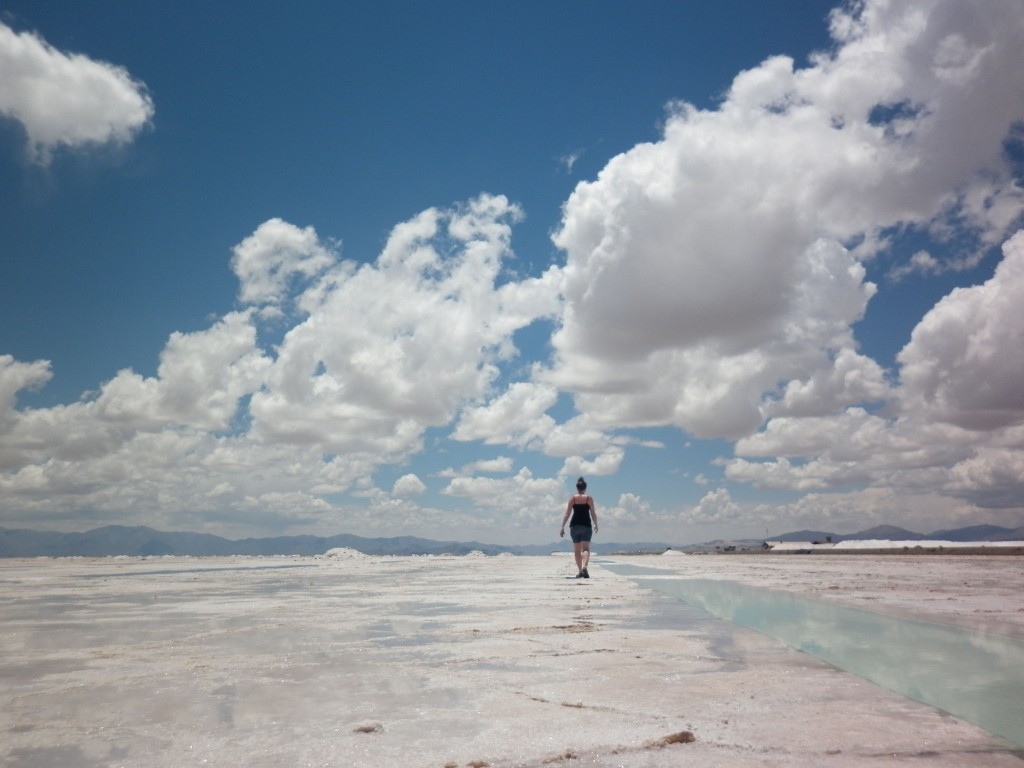I guess I expected the salt flats to look cleaner. Like a blanket of snow, except crunchy. What I found was a tire crushed lake bottom with crystal-blue long, rectangular pools cut into it. The salt here is being mined and it’s harvested through solar evaporation. When the pools are cut, ground water seeps into them and once that water has been evaporated by the sun, the salt is dug out, cleaned it and sent to your dinner table. Even with the muddy tracks, the flats stun your senses.
 In my mind Las Salinas Grandes were dry and wind-blown like a desert, but the flats receive a small percentage of rain a year, and have water underneath their salty crusts. Every step is crunch, splash, crunch, splash. I ended up with my legs covered in a fine film of salt and my shoes as hard as rocks when they dried.
In my mind Las Salinas Grandes were dry and wind-blown like a desert, but the flats receive a small percentage of rain a year, and have water underneath their salty crusts. Every step is crunch, splash, crunch, splash. I ended up with my legs covered in a fine film of salt and my shoes as hard as rocks when they dried.
Driving into the Las Salinas Grandes along route 52 from Purmamarca, there are roadside parking areas selling salt statues in shape of llamas, pyramids and rabbits. There are also picnic tables and benches made of salt and an entire building, bathrooms and all, made from salt blocks. The Salinas are supposedly owned by a private salt-mining company — an interesting clash with Argentina’s “every body of water is public property” law… is this ancient lake bottom still technically a body of water?
Imagine for a moment what it must have been like (anywhere from 5 to 10 billion years ago according to wikipedia) when this 212 kilometer-square lake was filled with water, salified by the volcanic activity in the mountains surrounding it. A virtual ocean in the middle of what now is no man’s land, where you stumble upon an adobe house every 30 miles or so and your only company on the drive are the packs of vicuñas that wander about aimlessly, looking for the occasionly shrub. It must have been breathtaking.
The sun’s glare off the endless white gives you a headache without sunglasses and you stare blindly at the other tourists ambling about, unable to tell if they are near or far, because of the flats’ complete void of points of reference. Is that pile of salt a mountain or a mole hill? It’s the kind of thing that makes a girl thirsty.
Click here to subscribe via RSS


